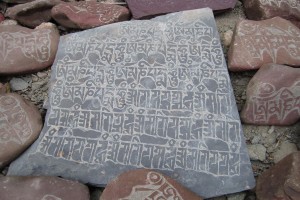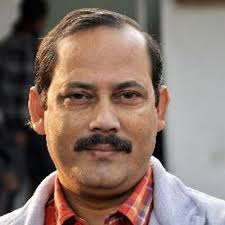
 By Nava Thakuria
By Nava Thakuria
Guwahati: Not many know that Devabhasa Sanskrit was the official language in the region since the days of majestic Kamrup kingdom till the Ahom era in Assam.Various written documents from the days of great Ahom king Rudra Singha and others undoubtedly proves the royal recognition to the sacred language of Hinduism.
However, Sanskrit has much been neglected in the country. Speakers with Sanskrit as their mother tongue account for just 0.002 per cent of India’s total population. However, 0.19% of the population uses Sanskrit as second or third language.
There are seven villages in four states of India where still Sanskrit remains the local language of conversation and where all the people including small children, women, elder people, literate and illiterate speak fluently in Sanskrit. These villages are:
- Mattur (Karnataka) – a village of about 5000 residents, about 300 km from Bengaluru. It was in the 1980s when the villagers, who till then used to speak in Kannada and Tamil decided to adopt Sanskrit as their everyday language following a call by a local priest there.
- Jhiri (Madhya Pradesh) – a remote settlement of 1000-odd villagers, it is situated 150 km north of Indore. The villagers took to Sanskrit about 16 years ago and now the entire village converse in Sanskrit which replaced their local dialect Malwi.
- Sasana (Odisha) – this remote village in the coastal Gajapati district has about 50 households with about 300 members. For generations, at least one member of every household gets education in Sanskrit medium.
- Baghuwar (MP) – In this village in Kareli Tehsil of Narsimhapur district, Sanskrit is the prime language spoken by the villagers.
- Ganoda (Rajasthan) – Till a decade ago, villagers of this village in Banswara district spoke only in their local dialect, Wagadi. However things changed after the setting up of a Sanskrit school there.
- Mohad (MP) – Sanskrit is spoken by most of the villagers in this village of Burhanpur district.
- Hosahalli (Karnataka) – About 5 kilometers from Shimoga, this village uses Sanskrit in its efforts to support Gamaka art – a unique form of singing and storytelling along with Carnatic music.
In 2010, Uttarakhand became the first state in India to have Sanskrit as its second official language, followed by Himachal Pradesh, which made Sanskrit as its second official language in 2019.
There are 14 Sanskrit universities, including 2 Central Universities, cutting across 13 states of the country as of now. Besides, there are over 100 institutes outside India that offer academic studies in Sanskrit.
As it is, Sanskrit has been the predominant language of Hindu philosophical and religious texts, as well as poetry, music, drama, scientific, technical and others. It is the predominant language of one of the largest collection of historic manuscripts. The earliest known inscriptions in Sanskrit are from the 1st century BCE, such as the Ayodhya Inscription of Dhana and Ghosundi-Hathibada (Chittorgarh).
Sanskrit has greatly influenced the languages of India. All modern Indo-Aryan languages (Hindi-Urdu, Bengali, Punjabi, Marathi, Gujarati, Rajasthani, Bhojpuri, Odia, Maithili, Sindhi, Nepali, Assamese, and Chhattisgarhi) , as well as Munda (North Munda [largely Santali], spoken in the Chhota Nagpur Plateau of Jharkhand, Chhattisgarh, West Bengal, and Odisha, and South Munda, spoken in central Odisha and along the border between Andhra Pradesh and Odisha) and Dravidian languages (Telugu, Tamil, Kannada, Malayalam, Tulu, Kodava, Kurukh and Gondi) have borrowed many words either directly from Sanskrit (tatsama words), or indirectly via middle Indo-Aryan languages (tadbhava words). Words originating in Sanskrit are estimated at roughly fifty percent of the vocabulary of modern Indo-Aryan languages, as well as the literary forms of Malayalam and Kannada. Literary texts in Telugu are perhaps seventy per cent or more lexically Sanskrit. Marathi derives most of its words and Marathi grammar from Sanskrit. Sanskrit poetical literature had also influenced Old Tamil literature Cilappatikaram and Maniemakalai. Middle Tamil showed a significantly higher influence of Sanskrit into the Bhakti poems.
For nearly 2,000 years, Sanskrit had exerted influence across South Asia, Inner Asia, Southeast Asia, and to a certain extent East Asia. Hence, Sanskrit as a national language in India is a very much logical expectation. Even many European nations have lately shown interests in nurturing the ancient language of India and some are even offering courses on Sanskrit literature in educational institutions.
No doubt there are expectations and time and again demands raised that Sanskrit be made the national language of the country.
Days back, India-based senior French journalist and scholar Francois Gautier, too had argued that Indian people should revive Sanskrit as the Israelis did with their Hebrew language, because it could revitalise the whole Indian culture and unify the country like never before. Israel in 1948 made its ancient language Hebrew, then considered as a dead language for the last 2000 years, the official language.
Gautier had also appealed to the Indian government to invite a group of dedicated linguists to sit down with Sanskrit scholars to devise a way of simplifying and modernising the mother of all Indian languages. He had pointed out that in Israel where after Jews from various parts of the world came and settled down, a major problem was aroused because they spoke different languages. Then the Israeli authorities asked their scholars to revive the Hebrew language so that everybody could use it comfortably.
Recently KG Vanzara, a former bureaucrat turned advocate, has urged the Supreme Court of India to direct the Union government in New Delhi to notify Sanskrit as the national language of India keeping Hindi as its official language.
This move has been welcomed by Patriotic People’s Front Assam (PPFA), a group of Assam intelligentsia. “The forum of nationalists in northeast India argues that the initiative would also help promoting the national integration in a far better way,” the PPFA stated.
(with inputs from global bihari bureau)





